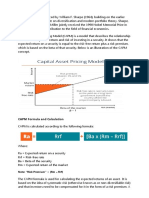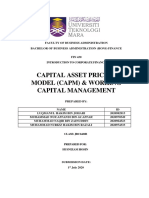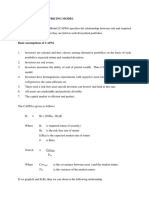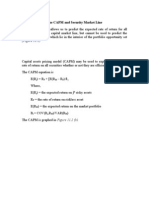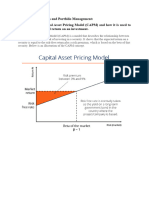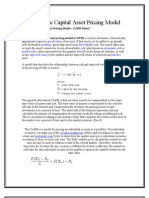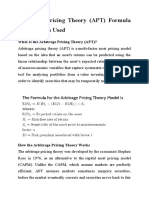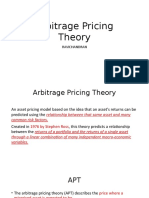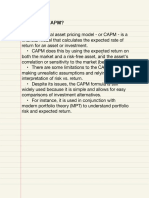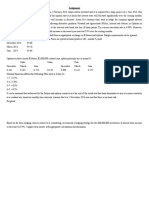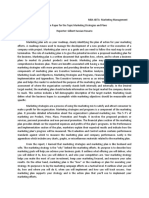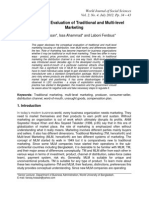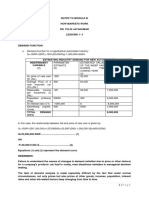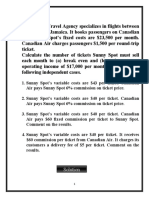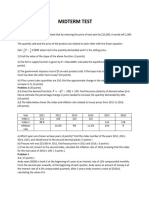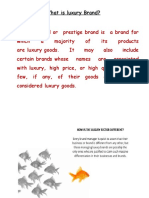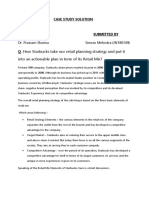0% found this document useful (0 votes)
166 views10 pagesFinance Students' Guide to CAPM & APT
This document provides information on the Capital Asset Pricing Model (CAPM) and Arbitrage Pricing Theory (APT). It defines CAPM as a method for calculating required rates of return based on an asset's systematic risk. It then explains CAPM, provides the formula, and gives an example calculation. It also defines APT as assessing linear relationships between asset returns and macroeconomic factors to estimate pricing. It outlines the APT assumptions, arbitrage concept, and mathematical model.
Uploaded by
irfanhaidersewagCopyright
© © All Rights Reserved
We take content rights seriously. If you suspect this is your content, claim it here.
Available Formats
Download as PDF, TXT or read online on Scribd
0% found this document useful (0 votes)
166 views10 pagesFinance Students' Guide to CAPM & APT
This document provides information on the Capital Asset Pricing Model (CAPM) and Arbitrage Pricing Theory (APT). It defines CAPM as a method for calculating required rates of return based on an asset's systematic risk. It then explains CAPM, provides the formula, and gives an example calculation. It also defines APT as assessing linear relationships between asset returns and macroeconomic factors to estimate pricing. It outlines the APT assumptions, arbitrage concept, and mathematical model.
Uploaded by
irfanhaidersewagCopyright
© © All Rights Reserved
We take content rights seriously. If you suspect this is your content, claim it here.
Available Formats
Download as PDF, TXT or read online on Scribd
/ 10

